Nestled on the island of Kyushu, Beppu is not just a city; it’s a living, breathing spectacle of nature’s own spa. Renowned for being one of Japan’s most famous hot spring (onsen) destinations, Beppu offers a unique blend of traditional Japanese culture with the raw beauty of volcanic nature. Here, steam billows from the earth’s crust, creating a mystical ambiance that envelopes the city. Let’s embark on a journey to Beppu. Every visit promises relaxation, discovery, and a deep dive into the warmth of both its waters and its people.

A Gateway to Geothermal Wonders
The City of Steam
In Beppu, the earth speaks through clouds of steam, with more than 2,000 hot springs bubbling beneath its surface. This city’s identity is intertwined with these natural wonders, offering everything from tranquil baths nestled in nature to the unique “hells” (jigoku) – geothermally heated pools of water and mud that are more for viewing than bathing.
Immersive Cultural Experiences
Beyond the Onsen
While Beppu’s hot springs are the main draw, the city’s charm extends to its cultural festivals, traditional ryokans, and culinary delights. Engage with the local culture by attending a performance of Beppu’s traditional bamboo dance, staying in a ryokan to experience Japanese hospitality, or tasting local specialties like jigoku mushi (hell-steamed cuisine), where food is cooked using steam from the hot springs.
Adventures in and Around Beppu
Nature and Thrills
Beyond its steamy streets, Beppu’s surroundings beckon with natural beauty and adventure. Trek the lush trails of Mount Tsurumi, visit the cascading waterfalls of Takasakiyama Natural Zoo, or take a dip in the unique sand baths where you’re buried in naturally heated sand by the beach. Beppu offers an adventure for every type of traveler, blending relaxation with excitement.
Embracing Sustainability
A Model of Eco-Friendliness
Beppu’s commitment to sustainability is evident in its use of geothermal energy and conservation efforts. The city serves as a model for utilizing natural resources responsibly, providing a glimpse into the possibilities of eco-friendly tourism. Visitors are encouraged to partake in this ethos, ensuring the preservation of Beppu’s natural and cultural heritage for future generations.
Whether you’re here to soak in an onsen, explore the natural beauty, or simply enjoy the warmth of Japanese hospitality, Beppu promises a journey that’s as enriching as it is soothing.
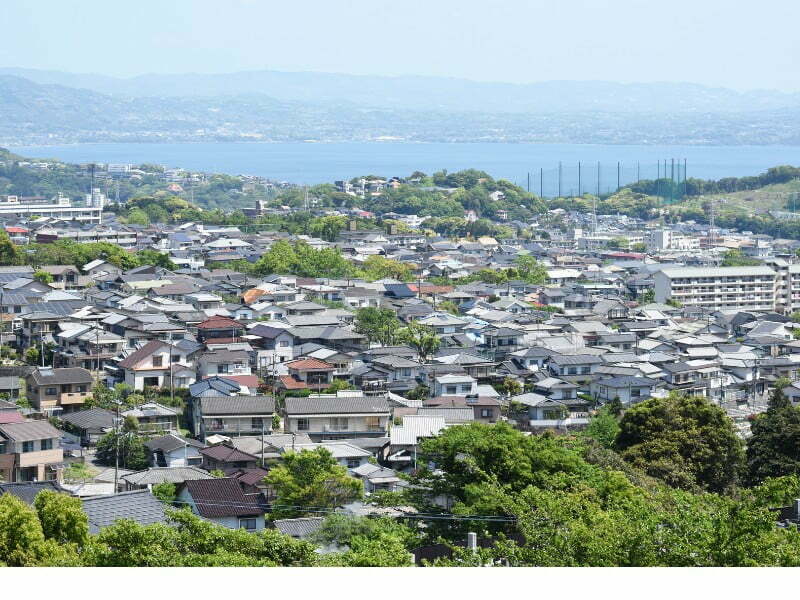
Beppu City Guide: A Brief History Of Beppu, Japan
This hot spring capital, famed for its billowing steam and healing waters, holds a history as rich and intriguing as the landscapes that envelop it. From its mythical origins to its rise as a modern spa destination, Beppu’s story is a fascinating journey through time. Let’s delve into the layers of history that make Beppu a place where the past and present are seamlessly intertwined.
Mythical Beginnings
Legends Woven in Steam
The origins of Beppu are steeped in mythology. According to legend, the god of hot springs, Ōkuninushi, created Beppu’s hot springs as a haven for healing. These tales, passed down through generations, are more than just stories; they’re the spiritual fabric of the city, reminding us that Beppu has always been a place of renewal and restoration.
Feudal Fortitude
The Age of Samurai
As centuries unfolded, Beppu found itself in the midst of feudal Japan, a period marked by the rise and fall of samurai clans. The area was strategically important for its hot springs, which served not only as places of healing for weary warriors but also as sites of social and political significance. The steam that rises from Beppu’s earth is a silent witness to secret meetings, battles, and alliances formed in the shadows of Japan’s tumultuous past.
A Modern Spa City Emerges
The Birth of a Hot Spring Haven
In the Meiji era, Beppu began to transform into the hot spring resort city we know today. Visionaries saw the potential in harnessing the power of Beppu’s natural resources, leading to the development of public bathhouses, inns, and the establishment of Beppu as a premier spa destination. This period marked the beginning of Beppu’s international fame, attracting visitors from around the world to bask in its healing waters.
The Cultural Cauldron
Beppu’s Living Traditions
Over time, Beppu has become a melting pot of cultures, where traditional Japanese customs blend with influences from across the globe. The city’s universities and international communities have introduced a cosmopolitan flair, yet Beppu remains deeply connected to its roots. Festivals, traditional crafts, and the art of onsen bathing are cherished and preserved, offering a glimpse into Japan’s rich cultural tapestry.
Resilience and Renewal
Facing Challenges with Grace
Beppu’s history is also one of resilience. The city has faced natural disasters, economic shifts, and the changing tides of society with a steadfast spirit. Each challenge has been met with innovation and a deep respect for nature’s power, ensuring that Beppu continues to thrive as a sanctuary for all who visit.
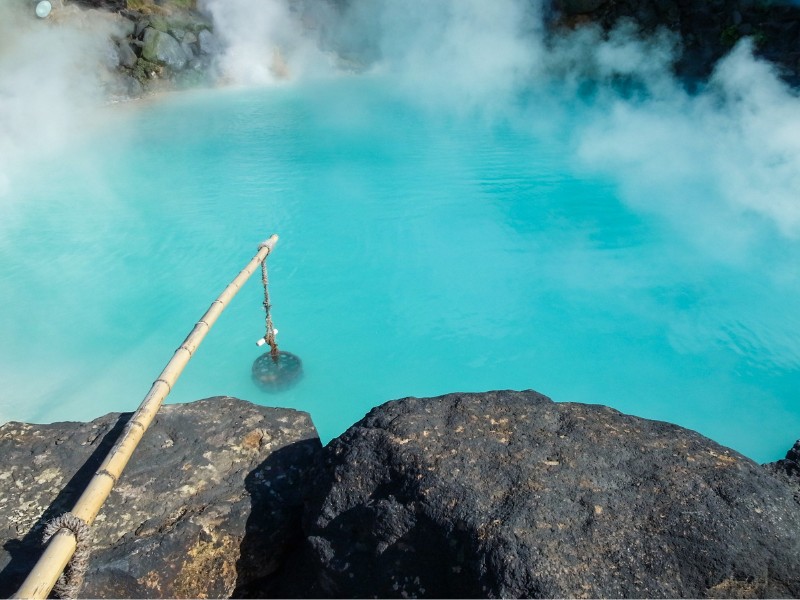
Beppu Top Attractions and Best Places to Visit in Japan
Wedged between a tall mountain range and the sea, Beppu is best known for being home to some of the best hot springs in all of Japan.
What it lacks in culture it makes up for in its outstanding natural scenery, making it well worth a visit.
Come check out our Beppu travel guide as we cover the best things to do in Beppu, Japan.
Soon after your arrival in this resort town, make your way over to the Hells of Beppu. Named for being a series of hot springs that are far too scalding to be bathed in, the sight of these steaming bodies of water are nonetheless this destination’s most stunning attraction.
There are seven hot springs in total, each with something that makes them unique. Oniishibozu Jigoku is a mud pit with huge bubbles said to resemble the heads of monks, Tatsumaki Jigoku features a geyser that erupts every 30 to 40 minutes, and Chinoike Jigoku is coloured orangish-red, giving it a fiendish appearance.
Those hoping to get in a soak during a visit to the Hells of Beppu won’t be disappointed, as there is a public bath (with water cooled enough to make it safe for bathing) adjacent to Oniishibozu Jigoku that can be accessed for 620 yen.
More Attractions
The geothermal activity produced by the Hells of Beppu has made it possible for townsfolk to power their stoves without gas. This is demonstrated at the Steam Cooking Center, where dishes are made using the steam from the hot springs in the area.
This isn’t a typical restaurant; you’ll be required to cook your own food, though, you can buy prepackaged meals to cook in one of the steamers. Not sure what to do? Volunteers stand by to assist first-timers in preparing their food in the way locals have done it for centuries.
Once you have finished seeing the Hells of Beppu, get away from the crowds for a couple of hours by visiting the Oita Fragrance Museum. Here, you will get a chance to learn about the process by which colognes, perfumes, and other scents are created.
Start on the first floor, where the raw materials used to create fragrances are shown, as well as displays showing off some of the world’s most famous perfume brands. On the second floor, the history of fragrances is discussed, from their origins to the many reasons why they have been used over the ages. End your stay in the Aroma Room, where you can breathe in some of the most common scents used in the world of fragrances.
Those looking to get outdoors while in the Beppu area should make a trip to the Yufugawa Valley. Here, you are surrounded by the beauty of greenery and water, as it falls along moss-covered canyon walls. Located far from the throngs of tourists that crowd the hot springs of Beppu, this is the perfect place to come if you are seeking solace during a visit to the region.

Other Cultural Attractions: Trip to Beppu, Japan
Travelling with kids in the Beppu area? Plan on spending a day at Kijima Kogen Park. This theme park sprawls over 25 hectares, featuring a tall wooden roller coaster, a giant Ferris wheel, and, of course, hot springs. With a hotel and a golf course on site, it’s a great place to base yourself if you are looking for comfortable mid-range family accommodations.
Get a spectacular view of the Beppu area by heading up Mount Tsurumi. Accessible by tram or trail, the sights at the top can be reached by travellers of all fitness levels. At the top, you’ll be able to take in views of Beppu, Oita, and the ocean beyond.
Cherry blossoms carpeting the lower slopes in spring and fall colours make for excellent photos through the warmer months. Those who are game for a little walk can make it to the summit within fifteen minutes of the upper tram station, while those looking for more can hike to other mountains in the chain within two hours.
Other Attractions
Take a break from sightseeing by taking a moment to stop in Beppu Park. Aside from all the sakura trees and flower beds, it has a small thicket of pine trees that are more than 100 years old – a quick walk through it will fulfill your forest bathing needs easily.
After a long day hiking or sightseeing, soaking in a hot pool is the only way to wind down. Staying at Suginoi Palace is the best way to include this as part of your holiday in Beppu, as it has mixed gender and sex-segregated onsens.
When you aren’t soaking your cares away, have a fun end to your day by getting in a game of bowling. Yes, that’s right – this resort has a bowling alley, so take advantage of it during your stay here.
source: Solo Travel Japan on YouTube
Top 20 Things To Do in Beppu, Japan For Visitors
Let’s dive into the top 20 things to do in this steamy city:
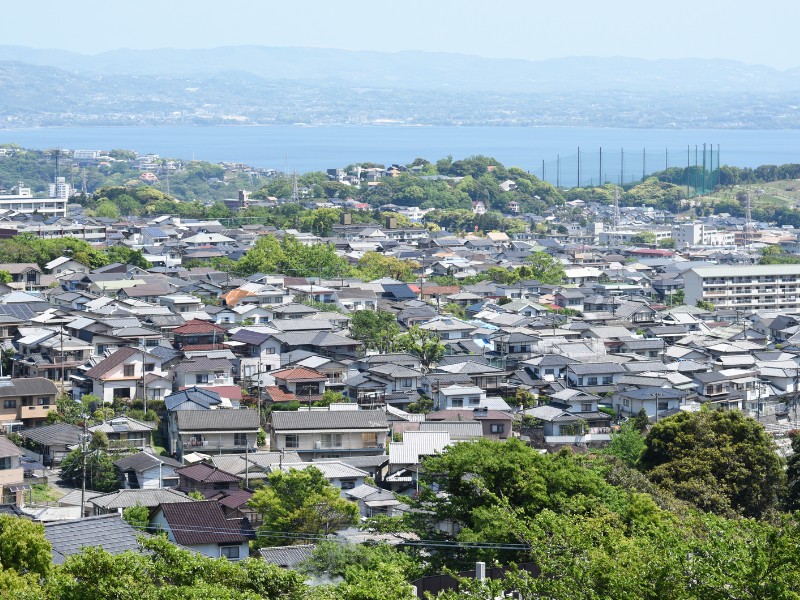
1. Visit the Hells of Beppu
Beppu’s famous “Hells” are not for bathing but for viewing—a geothermal spectacle you can’t miss. Each of the seven Hells boasts its own vibrant colors, from Chinoike Jigoku’s blood-red hue to the deep blue of Umi Jigoku. As you walk through these surreal scenes, the rising steam gives the landscape an ethereal feel. Don’t forget to browse the gift shops, where you’ll find unique souvenirs made from the spring minerals.
- Explore seven unique hot springs, each with distinct colors.
- Witness natural geothermal activity at its finest.
- Pick up mineral-based souvenirs from the gift shop.
2. Relax in an Onsen
Soaking in an onsen is an absolute must in Beppu, offering relaxation unlike anywhere else. You’ll find everything from traditional public baths to private onsens in luxurious ryokans. Beppu Beach even offers sand baths, where you’re gently buried in naturally heated sand. Each onsen brings its own charm, from the mineral-rich waters to scenic views that enhance the experience.
- Choose from a variety of public and private baths.
- Experience unique onsen sand baths at Beppu Beach.
- Feel the healing properties of mineral-rich hot springs.
3. Explore Beppu Tower
Standing tall since 1957, Beppu Tower blends retro charm with modern allure. From its observation deck, you’ll enjoy panoramic views of Beppu, its steamy landscape, and surrounding mountains. At night, the tower lights up, adding a nostalgic touch to the city’s skyline. Visit during sunset to witness the magical transition from day to night, with Beppu’s city lights twinkling below.
- Enjoy 360-degree views of Beppu and its iconic hot springs.
- Marvel at the tower’s retro architecture, standing since the 1950s.
- Visit at sunset for breathtaking golden hour views.
4. Visit the Beppu City Traditional Bamboo Crafts Center
Dive into Beppu’s rich cultural heritage with a visit to its Traditional Bamboo Crafts Center. Here, you’ll see local artisans weaving intricate designs from bamboo, blending art and utility. Take part in workshops that let you try your hand at crafting your own bamboo masterpiece. It’s a rewarding experience that showcases the centuries-old tradition of bamboo weaving in Beppu.
- Observe expert artisans at work on detailed bamboo crafts.
- Create your own bamboo souvenir during hands-on workshops.
- Learn about the cultural significance of bamboo weaving in Beppu.
5. Stroll Through Beppu Park
This serene park in the heart of the city is a peaceful escape, especially during the cherry blossom season when the sakura trees are in full bloom. Featuring traditional Japanese garden elements like ponds, bridges, and beautifully manicured landscapes, it’s perfect for a relaxing walk or picnic. Seasonal festivals bring the park to life with local celebrations and vibrant displays.
- Visit during cherry blossom season for breathtaking floral displays.
- Explore traditional garden elements, including ponds and bridges.
- Join seasonal festivals celebrating the changing seasons.
6. Experience the Beppu Ropeway
The Beppu Ropeway takes visitors on a scenic journey to the summit of Mount Tsurumi, where panoramic views of Beppu Bay await. The ride itself offers stunning perspectives of the city’s steam-filled landscape below. Once at the summit, visitors can explore alpine walking trails and admire the colorful foliage in autumn or the vibrant azalea blooms in spring.
- Take in breathtaking views from the ropeway and summit.
- Hike through alpine trails, enjoying seasonal flowers and landscapes.
- See fiery autumn colors or blooming azaleas, depending on the season.
7. Explore the African Safari Park
Just outside Beppu, this open-air safari park allows you to see exotic animals like lions, tigers, and giraffes up close. You can either drive your own vehicle or take a guided bus tour, where the animals come right up to you. Feeding experiences with some animals are available, offering a unique way to interact with the wildlife.
- Choose between a self-guided drive or a bus tour.
- Get up close to wildlife, including lions and giraffes.
- Participate in feeding sessions for a hands-on experience with animals.
8. Visit the Beppu Art Museum
The Beppu Art Museum showcases a range of modern and contemporary art, with a focus on works from local and regional artists. Its diverse exhibits include paintings, sculptures, and installations that explore Japanese culture and creativity. With rotating exhibitions and cultural events, each visit offers something new for art enthusiasts.
- Discover modern Japanese art, including works from Oita Prefecture.
- Explore temporary exhibitions that change regularly.
- Attend cultural events that bring art to life through interaction.
9. Take a Walk on Kannawa Steam Street
In the Kannawa district, the streets are lined with hot spring steam vents, creating a mystical atmosphere as the steam rises around you. The area is famous for its traditional onsens and steam cooking facilities, where visitors can cook food using geothermal heat. Exploring Kannawa gives you a firsthand look at Beppu’s geothermal wonders and long-standing onsen culture.
- Walk through steamy streets, experiencing Beppu’s geothermal power.
- Cook food using natural steam at designated cooking spots.
- Visit centuries-old onsens, still operating in the district.
10. Enjoy the Beppu Fireworks Festival
Each summer, the Beppu Fireworks Festival lights up the sky over Beppu Bay, reflecting vibrant explosions on the water. The festival brings together locals and visitors for a night of celebration, with food stalls, music performances, and a lively atmosphere. It’s an unforgettable display of color and light, making for a perfect summer evening in Beppu.
- Watch colorful fireworks over the scenic Beppu Bay.
- Enjoy festival food stalls, offering local street food.
- Experience live performances, adding to the festive ambiance.
11. Discover Myoban Yunosato
Myoban Yunosato is a historic onsen village known for its unique ‘yunohana’—mineral deposits that have been used in bathhouses for centuries. Visiting this village offers insight into the traditional harvesting of these minerals and the opportunity to bathe in mineral-rich hot springs. The picturesque setting, with its thatched-roof buildings, gives you a glimpse into Japan’s onsen heritage.
- Explore traditional thatched-roof structures.
- Learn how yunohana minerals are harvested.
- Take a dip in unique mineral-rich baths.
12. Visit the Oita Fragrance Museum
Dive into the world of scent at the Oita Fragrance Museum, where you’ll learn about the art and history of fragrance-making. The museum offers interactive exhibits, allowing visitors to create their own perfumes while exploring the role of fragrance in different cultures. Its collection includes rare and historic perfume bottles, providing a sensory-rich experience.
- Create your own fragrance through hands-on workshops.
- Explore rare perfume bottles and historical scent materials.
- Learn the cultural significance of fragrance around the world.
13. Take a Cooking Class in Beppu
Beppu’s culinary scene is deeply influenced by its geothermal activity, offering a unique chance to learn traditional cooking methods. A cooking class in Beppu will teach you to prepare dishes like ‘jigoku mushi’ (steamed using hot spring steam) or local favorites like ‘toriten’ (tempura chicken). These classes blend culinary skills with cultural insights, making them perfect for foodies and curious travelers alike.
- Learn to cook using hot spring steam in a unique method.
- Prepare local dishes, including Beppu’s famous toriten.
- Gain cultural insights through Beppu’s culinary traditions.
14. Go Paragliding over Beppu Bay
For those seeking adventure, paragliding over Beppu Bay offers an unforgettable aerial view of the city and its steaming hot springs. Tandem flights with experienced instructors ensure that even beginners can enjoy this thrilling experience. As you soar above, you’ll appreciate the scale and beauty of Beppu’s unique landscape from a bird’s-eye perspective.
- Soar over Beppu’s steaming landscape for breathtaking views.
- Enjoy tandem flights with experienced instructors.
- Admire Beppu Bay and its natural surroundings from the sky.
15. Attend the Beppu Hatto Onsen Festival
Celebrate Beppu’s onsen culture at the annual Hatto Onsen Festival, which is filled with vibrant parades, performances, and onsen-themed activities. The highlight is the traditional “Yu-bayashi” music performances, held at various hot springs across the city. The festival showcases the city’s deep connection to its hot spring heritage and invites everyone to join in the communal festivities.
- Enjoy parades and performances during this annual festival.
- Listen to traditional Yu-bayashi music, performed at local onsens.
- Experience Beppu’s pride in its hot spring culture through lively events.
16. Explore the Takasakiyama Monkey Park
Takasakiyama Monkey Park is home to over 1,500 Japanese macaques, providing visitors a unique chance to observe these fascinating creatures in their natural habitat. The park is located on the slopes of Mount Takasaki, offering scenic views of Beppu Bay along the walking trails. It’s a great spot for wildlife lovers who want to learn about macaque behavior and ecology.
- Observe Japanese macaques in their natural environment.
- Enjoy scenic views of Beppu Bay from the park’s trails.
- Learn about the behavior and ecology of the macaques.
17. Sample Beppu’s Street Food
Wandering through Beppu’s streets, you’ll discover local food vendors offering delicious, hot-spring-inspired dishes. Try ‘jigoku mushi’ (food steamed using geothermal heat) or enjoy the refreshing taste of kabosu-flavored shaved ice. Sampling street food in Beppu is a journey into the city’s unique culinary traditions and the inventive ways locals use the natural landscape in their cooking.
- Taste ‘jigoku mushi’ dishes, cooked using hot spring steam.
- Enjoy kabosu-flavored shaved ice, a local sweet treat.
- Discover Beppu’s diverse food culture while exploring its streets.
18. Visit the Beppu Onsen Hoyo Land
For a unique onsen experience, visit Beppu Onsen Hoyo Land, where you can relax in mineral-rich mud baths. The facility also includes traditional water baths, steam rooms, and saunas, offering a comprehensive and rejuvenating experience. Mud baths are renowned for their skin-rejuvenating benefits, making them a popular part of the Beppu onsen culture.
- Relax in therapeutic mud baths, known for skin benefits.
- Enjoy a full onsen experience with steam rooms and water baths.
- Indulge in Beppu’s unique onsen offerings, beyond just hot water.
19. Hike to the Top of Mount Yufu
For outdoor enthusiasts, hiking Mount Yufu is a rewarding challenge. The trek takes you through diverse landscapes, from lush forests to open grasslands, and culminates at the summit, where you’re treated to stunning panoramic views of Beppu Bay and Yufu City. It’s the perfect day trip for those looking to explore Beppu’s natural beauty and enjoy some fresh air.
- Hike through diverse landscapes, including forests and grasslands.
- Reach the summit for incredible views of Beppu and Yufu City.
- Experience Kyushu’s natural beauty on this popular day hike.
20. Participate in a Tea Ceremony
Participating in a traditional Japanese tea ceremony in Beppu is a serene experience, offering insight into Japan’s tea culture and philosophy. The ceremony focuses on mindfulness and appreciation of the moment, with each gesture carrying symbolic meaning. It’s a perfect way to connect with Japanese traditions and immerse yourself in Beppu’s cultural heritage.
- Experience the mindfulness of a traditional tea ceremony.
- Learn about the art of tea preparation, from utensils to technique.
- Connect with Japanese culture in a serene and peaceful setting.

What To Eat and Drink in Beppu, Japan
From steaming dishes cooked directly by the hot springs to local delicacies that reflect Beppu’s rich cultural tapestry, here’s a guide to the must-try eats and drinks when visiting this steaming city.
Hell-Steamed Cuisine (Jigoku Mushi)
- Jigoku Mushi Dishes: Utilizing the steam from Beppu’s hot springs, jigoku mushi is a cooking method that steams ingredients like seafood, vegetables, and meat in specially designed steam boxes. This technique locks in flavors and nutrients, resulting in a pure and healthy taste. Visit a jigoku mushi kitchen to experience this unique culinary tradition firsthand.
Seafood Delights
- Toriten (Chicken Tempura): While tempura is a familiar dish, Beppu puts its twist on it by using chicken. These bite-sized, lightly battered, and fried chicken pieces are often enjoyed with a squeeze of lemon or dipped in a tangy sauce, making them a perfect comfort food.
- Seki Aji and Seki Saba: Renowned throughout Japan, Seki Aji (horse mackerel) and Seki Saba (mackerel) are caught in the nearby Hoyo Strait. These fish are celebrated for their exceptionally fresh, rich taste and can be enjoyed as sashimi, sushi, or grilled.
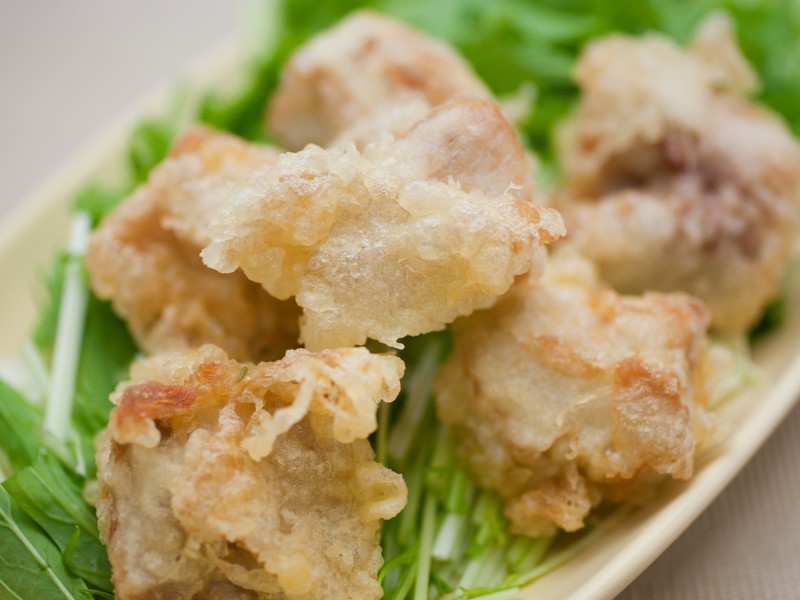
Local Specialties
- Beppu Reimen: A cold Korean-style noodle dish that’s become a local favorite, especially during the summer. The noodles are served in a chilled broth with kimchi, boiled eggs, and fresh vegetables, offering a refreshing yet spicy treat.
- Dangojiru: A hearty soup distinct to Oita Prefecture, featuring thick, hand-cut noodles and an assortment of vegetables in a miso-based broth. It’s a warm, comforting dish, perfect for replenishing after a day of exploring hot springs.
Sweets and Snacks
- Onsen Tamago: Eggs gently cooked in the hot spring waters, resulting in a delicate, custard-like texture. Eating onsen tamago is a simple yet profound way to experience Beppu’s geothermal gifts.
- Sweet Potato Treats: Thanks to the volcanic soil, sweet potatoes thrive in Beppu. Look out for sweet potato snacks like steamed sweet potatoes, sweet potato ice cream, and candied sweet potatoes.
Beverages
- Kabosu Juice: Beppu is near Oita’s kabosu orchards. Kabosu, a citrus fruit similar to lime, is used in various dishes and drinks. Its juice is a refreshing accompaniment to the local cuisine, known for its balance of tartness and sweetness.
- Local Sake and Shochu: Beppu’s mineral-rich water is not only good for baths but also for brewing sake and distilling shochu. Visit local breweries or izakayas to sample these alcoholic beverages that embody the essence of Beppu.
Onsen Water for Drinking
- Drinking Onsen Water: Some onsen facilities in Beppu offer mineral-rich hot spring water for drinking, believed to have health benefits. Each spring has different minerals, so the taste and benefits vary. It’s an experience unique to onsen towns.
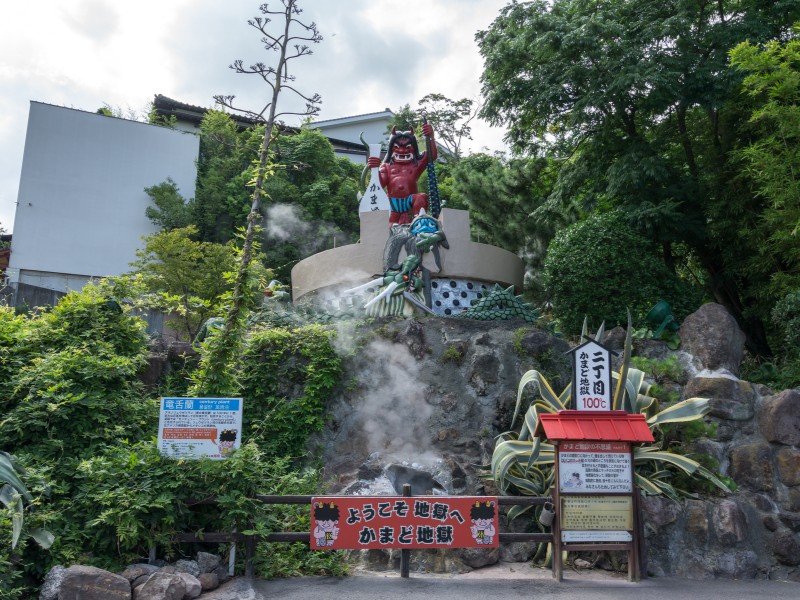
Tours For Visitors To Beppu, Japan
Here’s our travel guide to some of the best tours available for visitors to Beppu, ensuring a rich and varied exploration of this unique city and its environs.
1. Beppu Hells (Jigoku) Tour
- Discover the famous Beppu Hells, a series of hot springs known for their unique colors and properties, not meant for bathing but rather for viewing. This tour takes visitors through the most famous of these, including the cobalt blue Umi Jigoku and the blood-red Chinoike Jigoku, offering insights into the geothermal activity that defines Beppu.
2. Jigoku Mushi Cooking Experience
- Engage in a unique culinary adventure where you’ll learn to cook using the steam from Beppu’s hot springs. This hands-on tour allows visitors to prepare and enjoy their own jigoku mushi dishes, a healthy and flavorful way to experience the local cuisine directly influenced by the city’s geothermal features.
3. Beppu Onsen Experience Tour
- No visit to Beppu is complete without indulging in an onsen bath. This tour guides visitors through the city’s diverse range of public and private hot springs, from sand and mud baths to the traditional stone baths, offering a comprehensive onsen experience tailored to individual preferences.
4. Mount Tsurumi Ropeway Tour
- Ascend Mount Tsurumi via the ropeway to enjoy breathtaking panoramic views of Beppu and the surrounding Oita Prefecture. At the summit, visitors can explore walking trails that offer scenic vistas of Kyushu’s mountains and the sea, making this tour a favorite among nature lovers.
5. Takasakiyama Monkey Park Tour
- Visit the nearby Takasakiyama Monkey Park, where hundreds of wild Japanese macaques live freely. The tour offers a rare opportunity to observe these fascinating creatures up close in their natural habitat, along with a guided explanation of their behaviors and the park’s conservation efforts.
6. Beppu City Cultural Tour
- Explore the cultural heart of Beppu with a guided tour that covers historical sites, traditional crafts, and local museums. Highlights include visiting the Beppu City Traditional Bamboo Crafts Center and the Beppu Art Museum, offering a deeper understanding of the city’s rich heritage and artistic traditions.
7. Myoban Yunohana Hut Tour
- Discover the traditional craft of yunohana, the mineral-rich crystals used in onsen baths, in the Myoban district. This tour takes visitors to see the yunohana huts where these crystals are harvested and offers a chance to learn about the history and benefits of this unique Beppu specialty.
8. Local Food and Market Tour
- Dive into Beppu’s culinary scene with a tour of local markets and dining establishments. Sample street food, visit local izakayas, and learn about Beppu’s specialty dishes from an expert guide, providing a taste of the city’s vibrant food culture.
9. Beppu Bay Cruise
- Take to the waters with a scenic cruise around Beppu Bay. This relaxing tour offers stunning views of the city from the sea, the lush greenery of the surrounding mountains, and, if lucky, a spectacular sunset over the water, making for a memorable experience.
10. Rural Beppu Cycling Tour
- For the active traveler, a cycling tour around the rural areas of Beppu offers a unique way to explore the countryside. Pedal through rice fields, past traditional farmhouses, and along the coast, experiencing the beauty and tranquility of Beppu’s less-traveled paths.
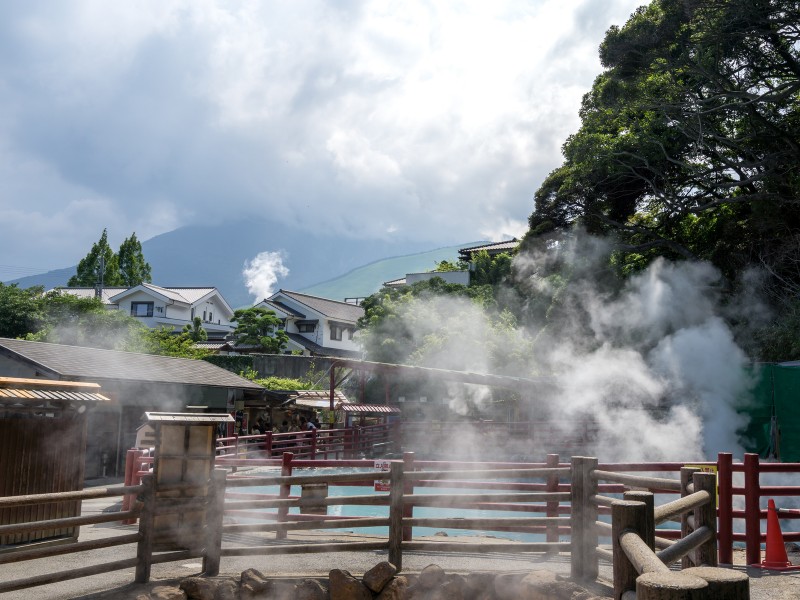
Beppu Accommodations Guide: Hotels, Guesthouses and Hostels
Here’s a comprehensive travel guide to some of the best places to stay in Beppu, ensuring your visit is comfortable, memorable, and immersive.
Luxury Ryokans and Hotels
1. Nishitetsu Resort Inn Beppu
- Located conveniently near Beppu Station, this hotel blends modern comfort with access to traditional onsen baths, offering rooms with stunning city or ocean views and a rooftop spa where guests can relax while overlooking the bay.
2. Kannawaen
- Situated in the historic Kannawa district, Kannawaen offers an exquisite blend of traditional Japanese architecture and luxury. Each suite boasts private onsen baths, with some featuring unique themes and garden views, providing an intimate and opulent hot spring experience.
3. Hyotan Onsen
- This ryokan is celebrated for its exceptional hot springs, including private family baths, sand baths, and steam baths. Hyotan Onsen provides a comprehensive onsen experience alongside comfortable accommodations, encapsulating Beppu’s spa culture.
Mid-Range Options
4. Hotel Umine
- An oceanfront boutique hotel, Hotel Umine offers spacious rooms with a personal touch, including private terraces and open-air baths overlooking Beppu Bay. It’s a perfect choice for those seeking tranquility near the sea.
5. Beppu Kamenoi Hotel
- Centrally located and offering easy access to Beppu’s main attractions, Beppu Kamenoi Hotel features family-friendly accommodations, with spacious rooms and a variety of on-site dining options, making it ideal for travelers looking for comfort and convenience.
Budget-Friendly Hostels and Guesthouses
6. Guest House Danran
- A cozy and welcoming guesthouse, Guest House Danran provides a social atmosphere with dormitory-style rooms, private Japanese-style rooms, and a communal kitchen, ideal for backpackers and solo travelers looking to meet fellow guests.
7. Beppu Guest House
- Offering both dormitory beds and private rooms at budget-friendly rates, Beppu Guest House is perfect for travelers watching their expenses. Its central location makes exploring the city and its hot springs easy and accessible.
Unique Stays
8. Onsen Hoyo Land
- This unique accommodation features a variety of natural mud and hot spring baths, along with simple rooms that allow guests to focus on the onsen experience. It’s a great option for those looking to immerse themselves in Beppu’s famous mud baths.
9. Shiosai-no-yado Seikai
- Overlooking Beppu Bay, this ryokan offers rooms with private open-air baths from which guests can enjoy ocean views. The ryokan combines traditional hospitality with a modern sensibility, making for a luxurious and serene stay.
Eco-Friendly and Sustainable Stays
10. Happy Neko Beppu
- Known for its eco-friendly practices, Happy Neko offers simple, comfortable accommodations with a focus on sustainability. The guesthouse is in a quiet neighborhood, providing a peaceful retreat for environmentally conscious travelers.
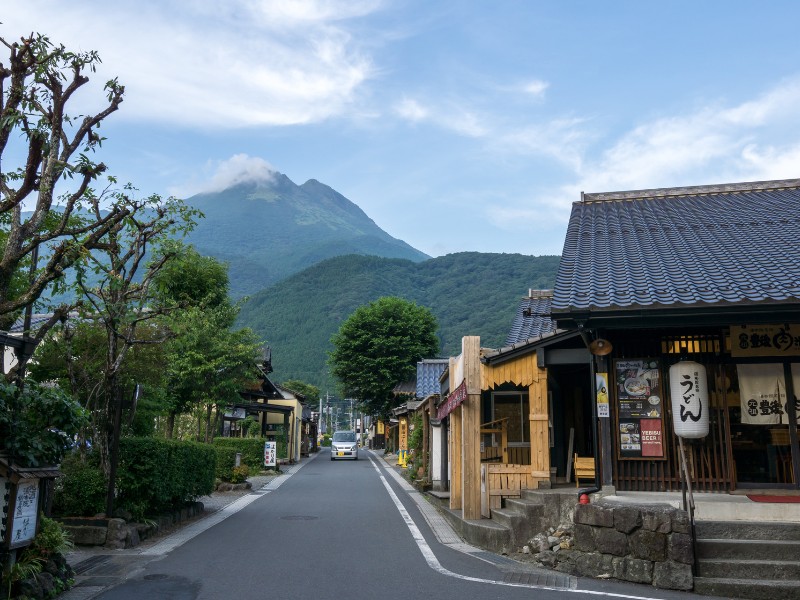
Day Trips From Beppu, Japan
Here’s a curated list of day trips from Beppu, each promising an adventure that unveils the diversity and richness of Kyushu.
1. Yufuin
- Just a short train ride from Beppu lies Yufuin, a quaint hot spring town known for its boutique shops, cafes, and art museums set against a dramatic mountain backdrop. The Yufuin Floral Village, a charming collection of European-style buildings, is a picturesque spot for leisurely strolls. Lake Kinrinko, at the town’s edge, offers serene views, especially in the morning when mist hovers over the water. Yufuin provides a more laid-back onsen experience compared to Beppu, perfect for those seeking relaxation amidst nature.
2. Kunisaki Peninsula
- The Kunisaki Peninsula is a spiritual sanctuary dotted with ancient Buddhist temples and Shinto shrines nestled in its forested landscape. Rokugo Manzan, the peninsula’s unique blend of Shinto and Buddhism, is best explored through the ancient trails connecting these sites. Fuki-ji, Japan’s oldest wooden temple, and the striking Usa Jingu Shrine are must-visit landmarks. The peninsula’s quiet, rural setting offers a peaceful retreat and a glimpse into Japan’s religious traditions.
3. Aso-Kuju National Park
- Home to one of the largest active calderas in the world, Aso-Kuju National Park boasts dramatic volcanic landscapes, lush grasslands, and wildflower fields. The Aso Volcano Museum provides insights into the area’s geological activity, while a ride up to the Mount Aso crater offers breathtaking views and an encounter with nature’s raw power. The park’s vastness encourages outdoor activities, from hiking to horseback riding. Aso-Kuju’s landscapes are a testament to the Earth’s living, breathing essence.
4. Takachiho Gorge
- Takachiho Gorge, carved by the Gokase River, is a natural masterpiece featuring sheer cliffs draped in greenery and the majestic Manai Waterfall. Rowing a boat through the tranquil waters of the gorge allows visitors to admire the basalt columns lining the cliffs up close. The nearby Takachiho Shrine, steeped in mythology, adds a spiritual dimension to the visit. Takachiho’s blend of natural beauty and mythological significance makes it a captivating destination.
5. Kitsuki
- Often referred to as a “samurai town,” Kitsuki offers a glimpse into the Edo period with its well-preserved samurai districts. Walking through the historic streets, visitors can explore traditional samurai residences and beautiful Japanese gardens. The town’s hillside geography offers splendid views of the surrounding area and the sea. Kitsuki’s charm lies in its ability to transport visitors back in time, making it a fascinating day trip for history buffs.
6. Usa Jingu
- Usa Jingu, one of Kyushu’s most important Shinto shrines, is nestled in a serene forest setting. The shrine complex, dedicated to Hachiman, the god of war, is both a place of worship and historical interest, with several buildings designated as national treasures. The approach to the shrine is lined with lanterns and torii gates, creating a mystical atmosphere. Usa Jingu’s peaceful ambiance and spiritual significance provide a tranquil escape.
7. Oita City
- As the prefectural capital, Oita City offers urban attractions, including contemporary art museums, shopping districts, and culinary delights featuring local seafood. Umitamago, Oita’s aquarium, is a family-friendly destination showcasing marine life from around the world. Oita’s Funai Castle ruins and the surrounding park are a pleasant spot for history enthusiasts and casual strollers alike. The city’s blend of modernity and tradition makes it an interesting contrast to Beppu’s hot spring-focused allure.
8. Hita
- Nestled along the Mikuma River, Hita is famed for its historic merchant district, Mameda-machi, where Edo-period buildings house cafes, craft shops, and sake breweries. The Hita Gion Yamaboko Kaikan museum, celebrating the town’s Gion festival, displays elaborate floats and festival artifacts. Hita offers scenic river cruises that provide views of the town’s charming landscape. The town’s rich history and cultural heritage, coupled with its natural beauty, make Hita a rewarding day trip destination.
9. Shimizu Gorge
- For those seeking natural beauty and adventure, Shimizu Gorge offers clear streams, lush vegetation, and opportunities for outdoor activities like hiking and river trekking. The gorge is particularly beautiful in autumn when the surrounding foliage turns vibrant shades of red and yellow. Its relatively untouched nature provides a serene setting for reconnecting with the outdoors. Shimizu Gorge is an ideal spot for nature lovers looking to explore Kyushu’s rugged landscapes.
10. Nagasaki
- A bit farther afield, Nagasaki is a city with a rich history and unique culture, influenced by its historical trade relations with foreign countries. Sites like the Peace Park, Atomic Bomb Museum, and Glover Garden tell the story of Nagasaki’s past and present. The city’s Chinatown offers a taste of its multicultural heritage. Despite the distance, Nagasaki presents an enriching experience that complements a visit to Beppu with its poignant history and vibrant culture.
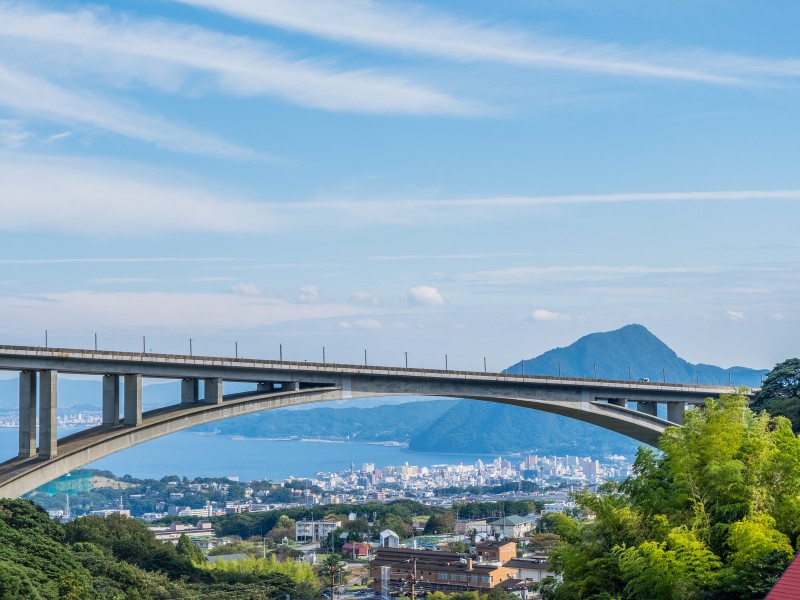
Beppu Transportation Guide
Whether you’re soaking in the city’s famous onsens, exploring its natural wonders, or enjoying its culinary delights, getting around is straightforward. Here’s a detailed travel guide to transportation in and around Beppu.
Within Beppu
1. Public Buses
- Beppu’s network of public buses is extensive, providing access to major attractions, hot springs, and residential areas. Bus routes connect Beppu Station with popular destinations like the Hells of Beppu, Beppu Ropeway, and various onsen districts. Timetables and route maps are available at the tourist information center at Beppu Station.
2. Beppu Onsendo Passport
- For visitors planning to explore multiple hot springs, the Beppu Onsendo Passport offers unlimited bus rides on designated routes and discounts at participating onsens. It’s an economical and convenient option for those looking to fully immerse in Beppu’s hot spring culture.
3. Taxis
- Taxis in Beppu are readily available, especially around the train station and major hotels. They provide a fast and comfortable way to reach specific destinations or attractions not easily accessible by public transport. Taxis can be hailed on the street, called by phone, or booked via hotel concierges.
4. Rental Cars
- Renting a car is a convenient option for those looking to explore Beppu and its surroundings at their own pace. Several rental agencies are located near Beppu Station. A valid international driver’s license is required for non-Japanese citizens. Parking in Beppu can be limited, especially around popular onsen areas, so plan accordingly.
5. Bicycles
- Beppu is relatively bike-friendly, with rental shops offering bicycles for those who prefer exploring the city on two wheels. Cycling is a great way to enjoy Beppu’s scenic beauty, especially along the coastal areas and in the city’s parks. Be mindful of pedestrian areas and steep hills when planning your route.
To and From Beppu
6. Trains
- Beppu Station is well-connected by JR Kyushu trains, including limited express services like the Sonic, which link Beppu with other major cities in Kyushu such as Fukuoka (Hakata), Kumamoto, and Oita. The station serves as a convenient hub for regional travel.
7. Buses
- Long-distance and intercity buses operate from Beppu Kitahama Bus Terminal, offering an alternative to trains for reaching destinations like Fukuoka, Kumamoto, Nagasaki, and even long-haul routes to Osaka and Tokyo. Buses can be a cost-effective option, especially for those traveling without a Japan Rail Pass.
8. Ferries
- For a unique travel experience, ferries connect Beppu with destinations across the Seto Inland Sea, including Yawatahama on Shikoku Island. The ferry terminal is located near Beppu International Tourist Port, offering both passenger and vehicle transport services.
9. Beppu Airport
- While Beppu does not have its own airport, Oita Airport is just a 40-minute drive away, providing domestic flights to major cities like Tokyo, Osaka, and Nagoya. Airport buses and taxis link Oita Airport with Beppu, making air travel a convenient option for visitors coming from farther away.
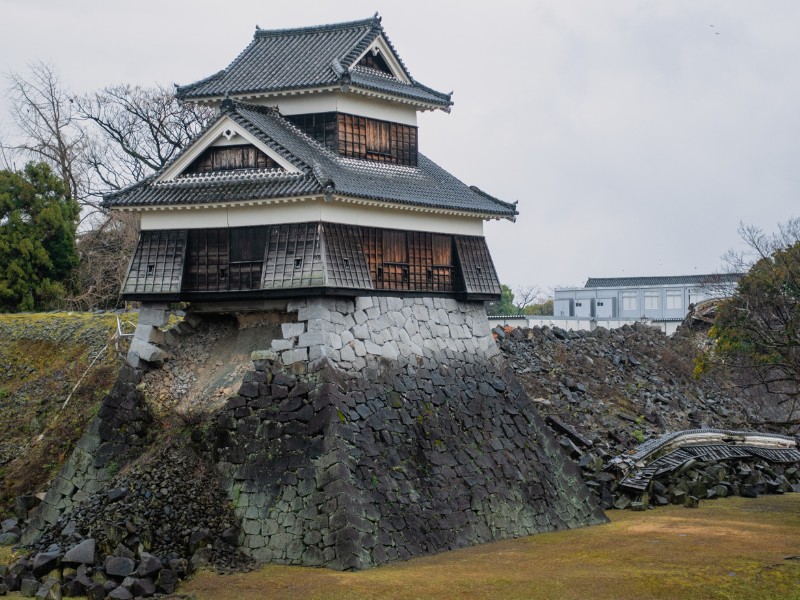
Where To Visit After Your Trip To Beppu?
Here’s a list of destinations to consider visiting after your journey in Beppu, ensuring the continuation of an unforgettable exploration of Japan.
1. Yufuin
- Just a short journey from Beppu, Yufuin is another onsen town renowned for its quaint rural charm, art galleries, and boutique cafes. The town is set against the stunning backdrop of Mount Yufu, offering scenic walks around Lake Kinrinko. Yufuin is perfect for travelers seeking a quieter, more laid-back onsen experience compared to Beppu. Don’t miss the chance to stroll down the picturesque Yufuin Floral Village shopping street.
2. Fukuoka
- As Kyushu’s largest city, Fukuoka blends modernity with tradition, boasting vibrant shopping districts, sprawling parks, and historic temples. It’s famous for its food scene, especially the Hakata ramen, a must-try for culinary enthusiasts. The city’s open-air food stalls, or yatai, provide a lively dining experience along the river. Fukuoka is also a gateway to the rest of Kyushu, making it a perfect next stop.
3. Kumamoto
- Home to the impressive Kumamoto Castle, one of Japan’s largest and most complete castles, Kumamoto offers a deep dive into Japan’s samurai past. The city also serves as a base for visiting the nearby Aso Volcano, offering breathtaking natural scenery. Suizenji Jojuen Garden is another must-visit spot, showcasing meticulously designed landscapes. Kumamoto’s rich history and natural beauty make it an essential destination.
4. Nagasaki
- A city with a poignant history, Nagasaki offers a unique blend of Japanese and European cultural influences, evident in its architecture and historical sites. The Peace Park and Atomic Bomb Museum provide powerful reminders of the city’s past. Glover Garden and Dejima offer insights into the period of national isolation and re-opening. Nagasaki’s compelling history and vibrant culture are both educational and deeply moving.
5. Saga
- Known for its pottery, particularly the famous Arita and Imari wares, Saga is a haven for art and history enthusiasts. The Saga Balloon Fiesta, held annually, fills the sky with colorful hot air balloons, creating a spectacular sight. Karatsu Castle and Yutoku Inari Shrine are also notable attractions that showcase the region’s heritage. Saga’s peaceful countryside offers a tranquil retreat from the bustling onsen city.
6. Miyazaki
- With its subtropical climate, Miyazaki is blessed with picturesque coastlines, such as the Nichinan Coast, and lush natural parks. The Aoshima Shrine, set on a small island surrounded by unique rock formations, is a mystical site worth visiting. Miyazaki also offers surfing opportunities, a rarity in Japan. For history buffs, the ancient Heiwadai Park hosts a collection of megaliths.
7. Kagoshima
- Dominated by the active Sakurajima Volcano, Kagoshima is often compared to Naples for its scenic beauty and volcanic activity. The Sengan-en Garden offers spectacular views of Sakurajima and insight into the lives of the Shimadzu clan. Kagoshima’s local cuisine, influenced by its volcanic surroundings, is unique and flavorful. A ferry ride to Sakurajima island itself provides an up-close experience with volcanic landscapes.
8. Oita
- Beyond Beppu, Oita Prefecture has much to offer, including the stunning Kunisaki Peninsula, rich in natural beauty and spiritual history. Oita’s rural areas, like the picturesque town of Usa, provide a glimpse into traditional Japanese life. The city of Oita itself offers shopping, dining, and cultural experiences. The Oita Stadium, known for hosting international rugby matches, is a modern architectural marvel.
9. Takachiho Gorge
- Mythology comes to life in Takachiho, where legends of the gods are etched into the landscape. The gorge itself, with its towering cliffs and waterfall, is a natural masterpiece accessible by rowboats. The Takachiho Shrine, steeped in myth, adds a spiritual dimension to the visit. Nightly Kagura performances recount the tales of Japanese deities in an enchanting setting.
10. Ibusuki
- Famous for its sand baths, where visitors are buried in naturally heated volcanic sand, Ibusuki offers a unique spa experience. The area is also known for its stunning landscapes, including the flower fields of Kaimon-dake. The warm climate and hot springs make it a year-round destination for relaxation and rejuvenation. Exploring the Satsuma Peninsula from Ibusuki reveals hidden beaches and coastal beauty.

Essential Questions About Visiting Beppu, Japan: First-Timer Planning Answers, Onsen Tips & Local-Style Logistics
How many days do you need in Beppu for a first visit?
It depends. If you only want the Hells of Beppu and one or two hot spring experiences, you can do a tight one-day hit.
But I think two days and one or two nights is the sweet spot. That gives you time for the Hells, a proper onsen crawl, a ropeway ride up Mount Tsurumi, and at least one slow meal of hell-steamed food without feeling like you’re speedrunning the city.
Is Beppu worth visiting if I’m not an onsen superfan?
Absolutely. Beppu isn’t just “a place with hot springs.” It’s a city where steam constantly rises from sidewalks, vents, and hillsides, which makes the whole place feel like a living geology exhibit.
Even if you only do one bath, you can still enjoy the ropeway views, local food that’s shaped by geothermal cooking, bamboo crafts, and a surprisingly fun mix of retro city vibes and natural drama.
Are the Hells of Beppu worth it and what’s the best way to see them?
Yes. This is Beppu’s signature non-bathing attraction, and it’s genuinely weird in the best way. The Hells are for viewing, not soaking, with wildly colored pools and dramatic steam displays. Some spring waters reach close to boiling temperatures.
A shared admission ticket is typically cheaper than paying individually, and recent official info lists an adult ticket around 2,200 yen and a child ticket around 1,000 yen, with hours generally around daytime sightseeing windows.
My strategy: start early, group the nearby Hells together, and pair them with lunch in Kannawa so the day feels cohesive.
Can you bathe in the Hells of Beppu?
Nope. The Hells are basically nature’s art installation—too hot for bathing.
That said, some areas near the Hells have safe, cooled public baths and other onsen facilities, so you can absolutely turn a “look at the Hells” outing into a “look, then soak” half day.
What’s the best onsen area to stay in: Beppu Station, Kannawa, or Myoban?
It depends on your trip personality.
Near Beppu Station is easiest for transit, casual dining, and day trips. Kannawa is ideal if you want that classic “steam everywhere” atmosphere and fast access to the Hells. Myoban is more rustic and scenic—great if you want a quieter, slightly more traditional feel.
If it’s your first visit and you’re here for a short stay, I’d lean Station or Kannawa for convenience.
What are the must-know onsen etiquette rules in Beppu?
Absolutely. The big ones are simple, but they matter.
Wash thoroughly before entering the bath. Keep towels out of the water. Speak softly and avoid splashing. And don’t take photos in bathing areas.
If you’re unsure, just watch what the locals do for 30 seconds—you’ll pick it up fast.
Are tattoos a problem at Beppu’s hot springs?
Not really—by Japan standards. Beppu is one of the more tattoo-flexible onsen cities, and official tourism resources even highlight tattoo-friendly options in the area.
Still, rules vary by facility. If you want zero stress, look for places that explicitly allow tattoos or offer private/family baths.
What unique onsen experiences should I try besides a standard bath?
Yes. This is where Beppu really flexes.
Try a sand bath where you’re gently buried in naturally heated sand, or a mud bath for something that feels like a spa-meets-volcano story. Steam rooms and geothermal cooking experiences also add variety if you want more than just hot water.
What should I eat in Beppu that’s hard to find elsewhere in Japan?
Start with jigoku mushi, the hell-steamed cooking style that uses onsen steam. It’s simple, healthy, and feels uniquely Beppu.
Then hunt down local Oita/Beppu staples like toriten (chicken tempura), dangojiru (a hearty noodle soup), and seasonal citrus flavors like kabosu in drinks or desserts.
How do I get around Beppu without a car?
Yes, it’s easy. The city bus network connects the main hot spring districts, the Hells, and key museums. Taxis are also straightforward for short hops, especially if you’re hopping between onsen areas.
If your plan is packed with paid sights, consider checking for day passes or bundled tickets at the station tourist desk.
Is the Beppu Round Tour Passport or any sightseeing pass worth buying?
It depends. If you’re planning to hit multiple paid attractions—especially the Hells plus a couple of museums or viewpoints—this can be a smart save.
Recent official pricing lists the Beppu Round Tour Passport at about 3,800 yen for 1 day and 6,000 yen for 2 days for adults, covering entry to a range of major sights.
If you’re only doing the Hells and one bath, you probably don’t need it.
Is Beppu family-friendly and fun with kids?
Yes. You’ve got parks, easy walks, fun food, and attractions like Kijima Kogen Park mentioned in the broader area options.
The main thing is managing the hot spring side safely: choose family-friendly facilities, keep water temperature in mind, and consider private baths for stress-free soaking with little ones.
What’s the best time of year to visit Beppu?
It depends. Spring and autumn are the most comfortable for walking between sights, and you’ll get great views from Mount Tsurumi without extreme heat or cold.
Winter is fantastic if your priority is soaking—cool air plus hot water is the dream combo. And Beppu’s hot spring culture is a year-round constant, so you can build a good itinerary in any season.
What are the best day trips from Beppu?
Yufuin is the obvious winner for an easy, beautiful onsen-to-onsen pairing, and it’s well connected from Beppu.
If you want something different, consider the spiritual sites of the Kunisaki Peninsula, broader volcanic landscapes in the region, or a nature-focused day that balances out all the steam and city strolling.
Beppu Travel Guide: Final Thoughts
This city, where the earth breathes and the waters heal, invites not just a visit, but a deep dive into experiences that linger long after you’ve departed. From the misty allure of its hot springs to the culinary delights that steam on your plate, Beppu has unfolded before us as a city that marries the natural with the cultural in the most enchanting ways. Let’s take a moment to gather our final thoughts on this unique corner of Kyushu.
A Sojourn Steeped in Steam
The Onsen Odyssey
Beppu’s heart beats in its onsens, offering more than just a soak; they provide a window into a culture that venerates water not just as a source of life, but of wellbeing. The diversity of bathing experiences, from sand baths to steamy spouts, reminds us that nature’s gifts are as varied as they are plentiful. These moments of relaxation are not just pauses in our journey; they are where memories cling, infused with warmth and tranquility.
Culinary Journeys and Cultural Encounters
Tastes and Traditions
In Beppu, every meal is a journey, and every bite tells a story. The city’s cuisine, steamed to perfection by the earth itself, offers flavors that are as deep and complex as the city’s geothermal landscapes. But beyond the plate, Beppu’s culture – its festivals, its dances, and its crafts – invites travelers into a narrative woven from the threads of history and the vibrant pulse of contemporary life.
Beyond the Mist
Explorations Unbound
Beppu serves not just as a destination but as a gateway. The surrounding landscapes beckon with adventures that range from the serene to the sublime, reminding us that to explore Beppu is also to set forth into the broader wonders of Kyushu. Each excursion, whether into the heart of a forest or the depths of history, adds layers to our understanding and appreciation of this region.
